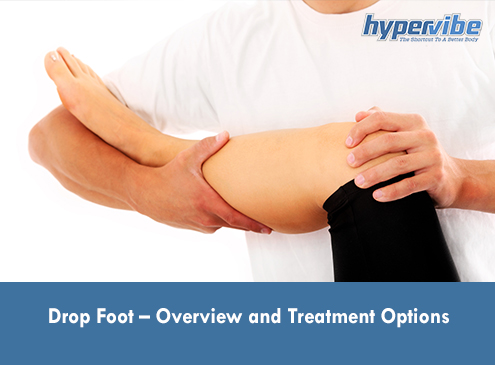Tight Pelvic Floor Muscles – Signs, Symptoms, and Treatment
The pelvic floor is a group of muscles that supports the pelvic organs. These organs include the bladder, the rectum (which is part of the large intestine), the uterus and the vagina, as well as the prostate. We can say that the pelvic floor muscles create the foundation of the abdominal cavity. They are connected to the sit bones on each side, the lower spine in the back, and the pubic bone in the front.
What are tight pelvic floor muscles?
This is a medical condition (also known as hypertonic pelvic floor) where the muscles in the lower pelvis are contracted. It could be a temporary contraction, also known as a spasm, or a constant state of contraction. When those muscles are contracted some body functions such as urination and bowel movements are impaired. Spasms could also cause sexual dysfunction and pain during sexual intercourse. The hypertonic pelvic floor could have a severe impact on the quality of life and should always be considered a serious condition.
Symptoms of the tight pelvic floor muscles
The most common symptom of this condition is pain. It could be located in the pelvic area, lower back, or hips. The pain could also be irradiating towards the bladder or uterus and could worsen during some activities like jumping, running, squatting, having sex, etc.
We could divide the rest of the symptoms into three categories, depending on the systems and organs they involve.
Symptoms of the bowel:
- Constipation
- Feeling of uncompleted defecation
- Flatulence
- Pain, associated with passing wind
- Pain after or during defecation
Symptoms of the urinary tract:
- Pain while urinating
- Burning or painful sensation along the urethra
- Frequent urination (also known as polyuria)
- Experience difficulties to start urinating and maintaining a strong and steady stream
Symptoms, associated with sexual function:
- Erectile dysfunction
- Pain during or after ejaculation
- Incapability of ejaculation, experiencing a feeling, described as a “blocked urethra”.
- Inability of achieving an orgasm
- Pain during or after the sexual intercourse
Unfortunately, it is quite common for the symptoms of the hypertonic pelvic floor to get worse as time passes so it is crucial for patients to contact their healthcare provider. In the early stages, this disease is totally curable, especially with innovative medical techniques such as pelvic floor vibration therapy which is a new non-invasive method that allows faster recovery.
How are the tight pelvic muscles causing those symptoms?
The contraction of the pelvic floor muscles causes the internal organs to move upwards and the sphincters at the openings of the urethra, vagina and anus to tighten. The tight sphincters don’t allow feces or urine to pass and can cause severe pain in both partners if it happens during sex. Furthermore, the cycle of relaxing and contracting these muscles creates peristaltic waves in the urethra and allows men to ejaculate. If the urethral peristalsis is impaired there is no way to achieve an orgasm and have pleasurable sex.
How do I know if my pelvic floor is weak or tight?
The most common signs of pelvic floor dysfunction are:
- Accidentally losing control of your bladder or bowel, resulting in the emptying of the pelvic tanks
- Accidentally passing wind
- Accidentally leaking urine during laughing, coughing, sneezing, or working out
- Urgent need to go to the toilet to urinate
- Frequent urges to urinate
- Experiencing difficulties in fully emptying the bladder
- A sensation of moderate pain during sexual intercourse
- General pain in the pelvic area
Another alarming sign of pelvic floor dysfunction is a prolapse. In guys, it could be felt as a bulge in the anal or rectal area or as a sudden urge to defecate without actually defecating. Women may experience a feeling of a bulge in the vagina, as well as a sensation of discomfort, heaviness, and pulling in the genital area.
How are tight pelvic muscles diagnosed?
Usually, it all starts with a regular doctor’s appointment. Your physician will ask you questions, regarding your medical history and current symptoms, as well as about some more specific medical matters such as bowel movements, urination, and sexual activity. Some patients find these topics very private and are hesitant to share all the needed information with their healthcare provider. However, it is crucial to answer every question as thoroughly as possible in order to help your physician diagnose you better.
After the medical history is taken it is time for the physical examination. Unfortunately, it is not possible to diagnose tight pelvis muscles without a proper physical examination. Depending on the particular clinical case, the exam may include:
- Manual digital rectal exam in order to inspect the patient’s anus and rectum.
- Pelvic exam to check the vagina and surrounding tissues
- Visual inspection of the pelvic, genital and anal areas is almost always performed.
There are more specific and high-tech diagnostic approaches such as:
- Electromyography (EMG) – electrodes are placed on the skin and a special device is measuring the electrical conductivity of the muscles in order to analyze their ability to relax and contract.
- Anorectal manometry – a small balloon with sensors is inflated in the rectum. In response to the inflated balloon, the anal and rectal sphincter contract. The pressure they apply on the balloon is measured by the sensors in the device.
- Defecography – a radiological medical procedure that is performed by inserting radiographic contrast (usually containing barium) into the rectum via enema. Then the patient is asked to defecate in a special toilet, equipped with x-ray imaging devices that take pictures.
- Urodynamic tests such as postvoid residual urine measurement, uroflowmetry, and radiographic video urodynamic examination.
Treating tight pelvic muscles
The main treatment approach is physical therapy in order to retrain the pelvic muscles. There are several methods, used by physiotherapists to treat this condition, such as:
Massage of the pelvic area
- Exercises for muscle stretching and joint movement
- Enhanced biofeedback in order to educate the patients how to contract and relax their pelvic muscles in the right way
- Teaching patients special relaxation techniques for the muscles of the abdominal wall
- Acupuncture
Nowadays there are many techniques that can be used at home even without medical prescription such as mild electrostimulation of the muscles and vibration therapy. It is scientifically proven that pelvic floor vibration therapy really helps to improve the strength of the pelvic floor muscles and the quality of life (QOL) in individuals with urinary incontinence.
However, in severe cases, a more complex procedures are needed. Medications could be prescribed in order to treat symptoms like pain, frequent urination and anxiety. Another clinical approach is the electrostimulation of the surrounding nerves and injections with corticosteroids or Botox ™.
Consultation with a gastroenterologist or colorectal surgeon could be required in patients with unbearable constipation or other bowel movement disorders. If there are reproductive issues, an examination by gynecologist and sex therapist is really helpful in order to reduce the risk of infertility in the future.
How long does it take to heal a tight pelvic floor?
Tight pelvic floor muscles are definitely treatable. Usually, in most of the cases, there is at least partial relief of the symptoms, following adequate treatment. However, it is quite common for the treatment to last a little bit longer than expected, so patients should have patience.
Sources:
https://my.clevelandclinic.org/health/diseases/22870-hypertonic-pelvic-floor
https://www.betterhealth.vic.gov.au/health/conditionsandtreatments/pelvic-floor
https://pubmed.ncbi.nlm.nih.gov/19283866/
https://www.pelvicfloorfirst.org.au/pages/how-can-i-tellif-i-have-a-pelvic-floor-problem.html
https://www.niddk.nih.gov/health-information/diagnostic-tests/urodynamic-testing
https://www.ncbi.nlm.nih.gov/pmc/articles/PMC6732087/













